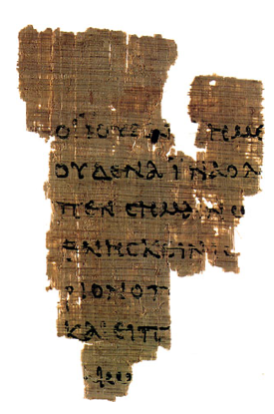Textual Criticism of New Testament Manuscripts

Important Early Documents
Last week we looked at the rich deposit of New Testament documents available to us. Not all of these are full documents however. Today I want to take a look at a few early important fragments, papyri, and codices that scholars use to try and determine the original text of the New Testament. This is by no means exhaustive, and as amazing as it sounds, more documents are still being uncovered regularly!
One of the earliest fragments of the New Testament is known as P52. It is very small – containing John 18:31-34, 37-38. But many scholars estimate it as dating to between 110-125 AD. This means it was copied within a few decades of when John wrote his Gospel! Here is a photo of the front of this fragment:

Another important documents is P46 (also known as the Chester Beatty Papyrus II). This document contains all of Paul’s letters except the Pastoral Epistles (1 and 2 Timothy and Titus). It is currently thought to date somewhere between 175-225 AD. Once again, by the standards for ancient documents this is extremely close to the original date of writing. Furthermore, this document is critical because it contains such a large portion of the New Testament. It is also important because it shows that a collection of Paul’s letters was already circulating in the 2nd century. Below is a photo of part of P46 containing part of Romans, and also part of Philippians and the beginning of Colossians. (Other ‘pages’ were inserted between Romans and Philippians when the papyrus was originally put together.)

Next week we will look at two other important documents known as Codexes. As always, take time to give God thanks for giving us His Word and preserving it down through the ages!
In Christ,
Bret
